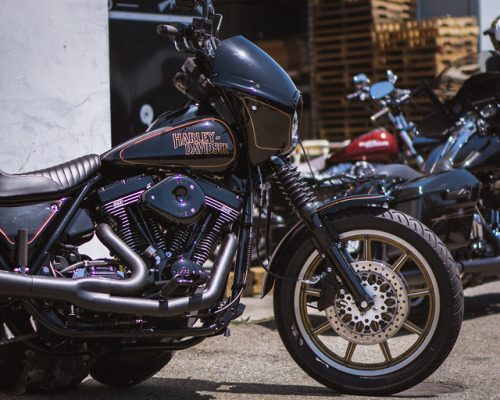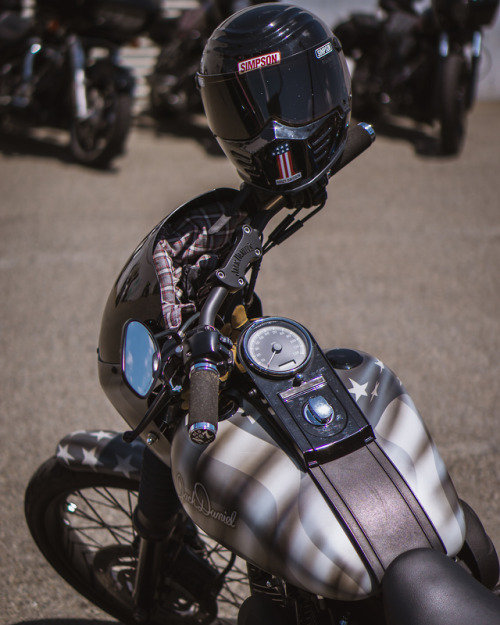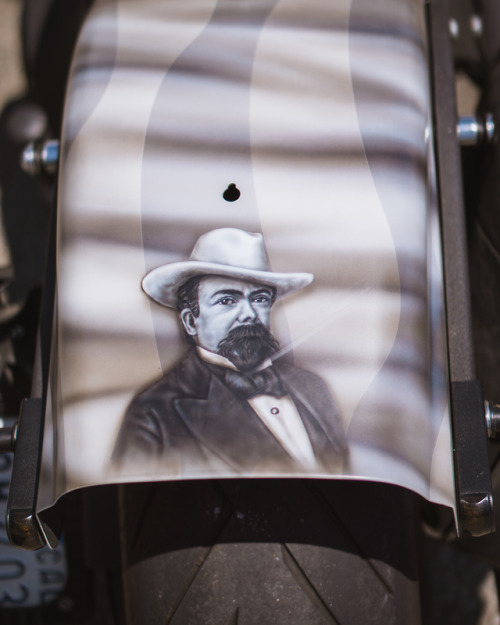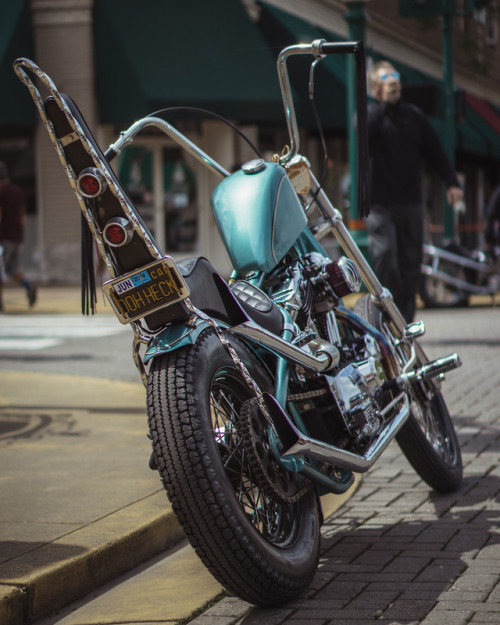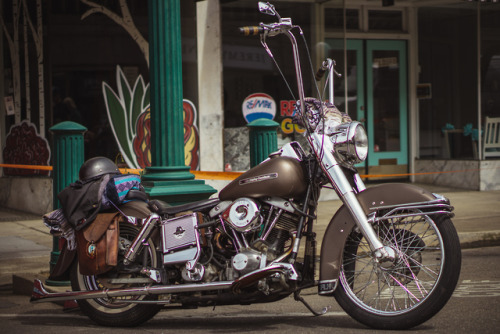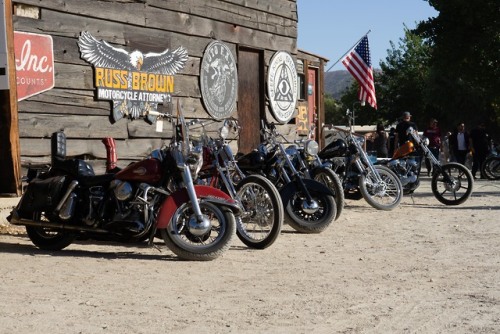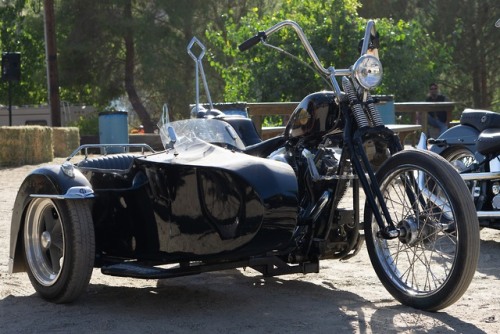#motorcyclediaries
My circumnavigation of the USA via motorcycle is over and I’m back in NYC. Time to rest for a couple days before my next adventure as a seminarian. Check back for more reflections.
Left Sedona/Cottonwood this morning. Saw sunrise at Jerome, AZ and drove an amazing road thru the Prescott Forest and some other state highways. Headed to Hoover Dam and Vegas, but not before stopping at my first In-N-Out Burger.
Post link
Oggi al museo @ducatimotor in preda ad una palese esaltazione. Ho scoperto un sacco di cose interessanti che condividerò con voi in un post, come ad esempio il fatto che la Ducati prima della guerra produceva rasoi, calcolatrici e radio. Niente spoiling, vi dirò tutto #bolognawelcome #ducati #twowheels #dueruote #instamoto #vintage #vintagemood #vintagelook #motorcyclelife #motorcycle #motorbike #motorcyclediaries #museum #ootd #look #lookoftheday #travel #traveling #travelmood #travelblogger #travelphotography #travelgirl (presso MUSEO DUCATI - Borgo Panigale)
Post link
Cali Commute ✌



Garage Company, Los Angeles, CA | 06.23.2019
I rolled on the throttle. I rocked backward. The rear shock compressed. And the front wheel lifted off the tarmac.

I’m a minimalist. I own seven pairs of underwear. I own 3 pairs of shoes - black boots, brown boots, and running shoes. I own one motorcycle. And most importantly, I don’town a car.
In my quest to downsize my possessions, I asked myself:
Do I really need a shelf full of books? Not when I can borrow them from the library.
Do I really have to collect vinyls? Not when I can Spotify the record.
Do I really need a second motorcycle? Maybe we should talk about this one…
When you undertake this lifestyle, you realize that simplicity doesn’t always lend itself to functionality. You learn that you better do laundry every week or you’re going commando on Monday. You learn to dress up your boots for the work week and dress them down for weekend hikes. And you learn that you’re shit out of luck when your motorcycle gets a flat.
If that last example seems oddly specific, that’s because I recently picked up a nail in my rear tire and had to take a sick day. I rely on one vehicle to get me to and from work, so I don’t have a plan B if anything goes wrong. They say the best ability is availability and I can’t expect the Harley to be 100% one-hundred percent of the time. So maybe a second motorcycle wouldn’t be such a bad idea, right?
I know what you’re saying, “why not just buy a car?” But I’m sorry faithful reader, that sounds far too practical and honestly isn’t an option for me. I enjoy not owning a car and I will do my best to keep it that way.
With that established, I should note that I want my second motorcycle to be off-road capable? I want to take on challenging, new terrain. I want to slide the back wheel out. I want to hit the whoops. I want to ride where I won’t get obliterated by a 2-ton cage on four wheels.
With that in mind, my search invariably led me to dual sports. Though I’d prefer a dedicated dirt bike, I’d also prefer to NOT own a pickup truck. How else would I get to the trails if I didn’t own an expensive toy (in the form of a truck) to cart my other expensive toy (in the form of a dirt bike) there? How could I keep my possessions to a minimum while justifying the purchase as a “necessary, and specialized” tool (wink, wink)?
Cue Zero’s light, dual sport, electric motorcycle, the FX.
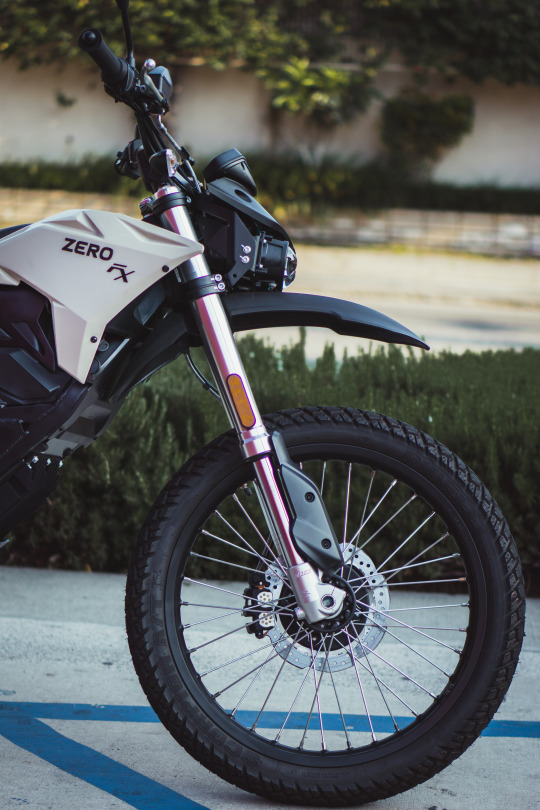
At 289 lbs, the FX touts an astounding 46 horsepower and 78 ft-lb of torque! Versus Honda and Husqvarna’s 450cc dual sports, that’s a powerful package that was just begging to be ridden. So when I swung a leg over the FX, it’s safe to say that I was giddy as an alcoholic at an open bar.
At just under 35″, the Zero’s seat height isn’t for the vertically challenged. With 8.6″ of travel up front and 8.9″ in the rear, I had to use all of my 5′10″ frame to fit the bike. While stationary, I stabilized the bike on the tips of my toes, but anyone sub-5′8″ would probably need to favor one foot at stop lights, using their leg as a human kickstand of sorts. Compared to the low slung seat of my Harley and the intermediate height of the Naked bikes I’ve ridden recently, the FX felt like straddling a donkey without stirrups.
With my toes brushing the concrete, I couldn’t help but bounce on the rear suspension. Surprisingly, the monoshock compressed quite easily, filling me with hope for undulating terrain, yet filling me with dread for twisting roads. It’s safe to say that my past experience with Yamaha’s FZ-07 left me with a residual distrust of mushy springs.

Once the rest of the group mounted up, we set out for the Hollywood Hills. Zipping along Fairfax Ave, our e-motors buzzed like a pack of RC cars, the audible whir increasing along with our speed. If there’s anything consistent across the Zero models that I’ve tested (FX & SR/F), it’s the sophistication of the throttle mapping. Without the modulation of a clutch, you would assume that the power would engage the back wheel instantaneously, but the gradual roll on aids the most ham-fisted riders and ramps up with exponential velocity as you twist your wrist.
While the FX gains speed without effort, it also holds low speeds with nuance and finesse. Squeaking past Hollywood traffic isn’t an easy feat for many a bike, but Zero’s dual sport pulls it off with a controlled low-speed mapping and steering.

The narrow frame squeezes through the smallest of spaces and its height allows the handlebars to easily float over side view mirrors. With a combination of weasel-like maneuverability and a range of 91 miles per charge, the FX challenges all other commuter candidates in the field.
As my group turned off Hollywood, leaving the urban landscape behind, I was pleased to see an empty street winding up a steep hill. That’s when the pace quickened. That’s when motor really stretched its legs. That’s when I could test out that suspect suspension.
We accelerated up the increasing incline, each rider inclined to increase the space between them and those following. We banked right. We banked left. And to my surprise, the “mushy” monoshock retained its rigidity in the corners, responding to my every input.

On my Harley, I depend on the weight of the bike to slow down my approach into an uphill corner, but on this featherweight, you barely lose any velocity. Despite my approaching speed, the bike easily negotiated each turn, relying on the combination of snappy handling and ride height/lean angle.
Though blasting through the corners is fun, speed is nothing without brakes, and the FX delivers in that department. Once we slowed to a stop, I peered down at the front rotor, floored by the fact that it only housed a single 240 mm rotor and a 4-piston caliper. The stiff, even braking left me perplexed. How could such a minimal package provide maximum performance?
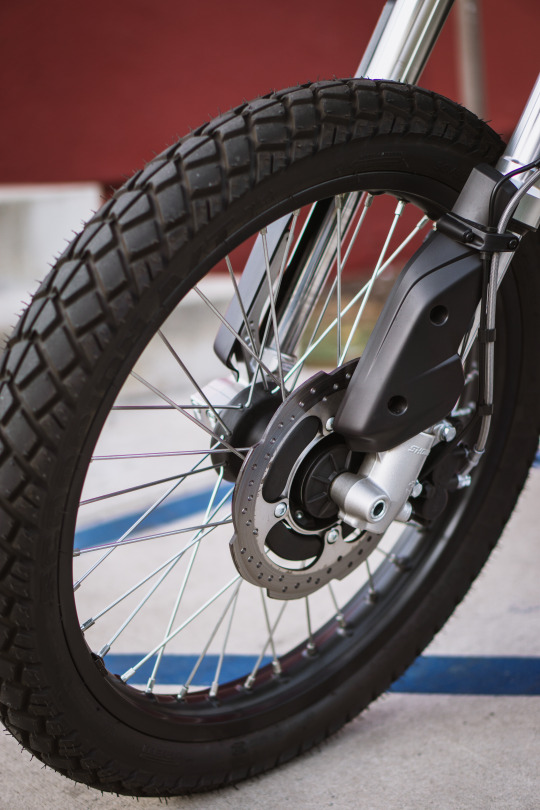
I could chalk it up to the light weight of the FX, but that would be an oversimplification because the J-Juan calipers that come equipped on all Zeros have only outperformed my expectations on the bikes I’ve tested.

Once the pack regrouped at a stop sign, we turned down a side street.
I rolled on the throttle. I rocked backward. The rear shock compressed. And the front wheel lifted off the tarmac.
Now, I can’t lie, I wanted to see if I could wheelie the FX. Lacking a clutch, Zero’s dual sport has to rely on horsepower alone to get that front wheel up, and I’d be lying if I said that I wasn’t curious if it could do it. But once I achieved my goal, I came to my senses and kept my lead wrist in check.
We soon descended the domestic labyrinth, bending the fleet of Zeros through the gentle curves of the Hollywood Hills neighborhood. Little did I know, a stop sign was waiting for me at the bottom of the hill.
I stabbed the front brake. I slammed on the rear pedal. I braced for the endo. I waited for the rear to break loose. But instead, the bike eased to a steady stop, the calipers progressively clamping down on the frisbee-sized rotors.

After that close call, I diagnosed the only shortfall with the FX, and it wasn’t the brakes, it wasn’t the handling, and it damn sure wasn’t the power. The sole complaint I had for the FX was the ergonomics.
While the bars are wide, while the riding posture is upright, the height of the footpegs leave your lower quarters cramped. At a level angle, the pegs force your feet into an acute angle with your shins. Having my knees bunched up, I found myself frequently dangling my right foot where it naturally wanted to rest, under the brake pedal. Not the safest of positions when you need to brake in an emergency.
But aside from the performance of the bike, you also have to take pragmatism into account. The biggest barriers for the FX - and most electric motorcycles - are price and range. With an MSRP over $10K, I’m not sure if I could justify purchasing a bike that only nets an hour and a half of ride time. I wouldn’t be able to undertake a long trip on the FX. I would be limited to a 45-mile riding radius or risk the possibility of not making it back home. Living in the city, I’m not sure if I could even make it to the dirt with that capacity (or lack thereof).
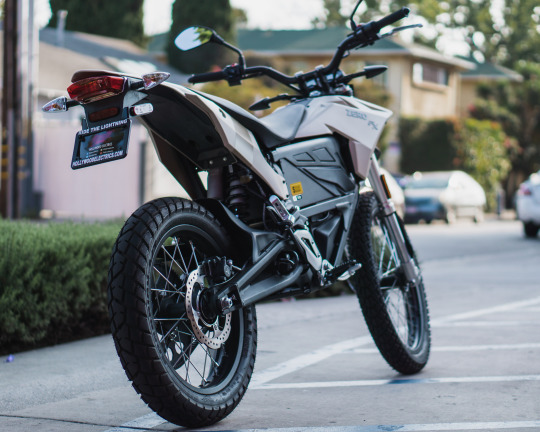
In order to get the most out of the FX, I would need to transport it to the nearest trail, and it doesn’t make much sense to pay for a $10K bike that would need a $20K truck for me to properly enjoy it. At a scant 91 miles per 9.7-hour charge, I realized that the best ability truly is availability. And I’ll take a Harley that’s 100% ninety percent of the time versus a Zero that is only 100% fifty percent of the time.
In time, the range of e-bikes will increase and the price will decrease, but for now, I’ll rely on my good ole Low Rider…and maybe take a few more sick days.




BORN FREE MOTORCYCLE SHOW: YEAR 11 (Pt. 1)




BORN FREE MOTORCYCLE SHOW (YEAR 11): The Stampede - Flat Track Races (Pt. 1 - The Parking Lot)
Harley-Davidson’s Baby Bike
Sometimes less does mean more… customers.

Yesterday, Harley announced their partnership with Chinese Manufacturer, Qianjiang Motorcycle Company Limited, to produce the smallest bike in their current lineup.
At 338cc, HD will only offer the entry-level moto in China, catering to the needs of its large and ever-growing urban population. Whether you agree with the move or not, the announcement aligns with the company’s current direction, appealing to a younger, metropolitan demographic.
With a goal to reach 50% revenue in international sales by 2027, this news marks a pivotal moment in Harley’s future plans. While the rest of the motorcycle industry turns their attention to India, gaining access to the highly restrictive Chinese market helps the Motor Company plant a flag where others are unwilling to go. This move will also help Harley explore where it’s been historically reluctant to go, design updates.

Sporting a trellis frame and an inline twin, the new bike feels miles away from your classic Harley. Where are the forward controls? How am I supposed to attach a sissy bar? Why isn’t the motor v-shaped?
Despite all the departures from HD’s vintage aesthetic, the twin thumper still retains the iconic silhouette of one of the Motor Company’s most decorated models, the XR750. Leveraging the peanut tank, the tail section, and the livery of the XR, the brand plans to draw upon its legacy to attract a new group of riders. By leaning on the racing heritage, Harley preserves the design continuity of their past and acts as a stabilizing force in the face of a rapidly changing customer base. If the technology changes, if the feeling changes, at least the design is familiar.
Harley seems to be following the approach Ford took with the Mustang and VW chose for the Beetle: they’re making what’s old new again. You could say that’s what Harley’s always done, but this time, they’re not afraid to change what’s under the hood/tank. However new, however earth-shattering the design may be to the Harley faithful, I’d be remiss to not mention how HD’s newest model eerily resembles another bike that Qianjiang manufactures, the Benelli TNT 300.

Even if they’re essentially rebranding another bike, even if the production of the bike is restricted to China, I certainly hope the model makes its way to the states (along with production [of North American units]) because the small displacement market is the fastest growing segment in the industry. New and younger riders tend to opt for smaller, lighter bikes, and the Motor Company lacks a sub-500cc offering as it stands.
You could say that the Street and Sportster acts as Harley’s beginner bikes already, but at 450 and 550 lbs respectively, many new riders (female and male) don’t consider those models manageable rigs for their first two-wheeled vehicle.
With a 338cc motor, the MoCo’s baby brawler could deliver a lower entry point for riders (in age and weight), increasing the likelihood of developing brand loyalty with younger riders.
While I think this is a great move for HOG, I can’t help but ask:
Why aren’t they going even further/smaller?
It makes me wonder why Harley doesn’t have a line of 125cc and 250cc dirt bikes. It makes me question where their 50cc and 75cc pit bikes are. If they really want to develop riders from a young age, why aren’t they making models that grow with them? Why are the majority of dirt bikes produced by Japanese and Austrian-based companies when it’s a predominantly American sport? If there’s such a big demand for dirt bikes in America, why doesn’t Harley have a dog in that fight?

In March of this year, HD purchased StayCyc, a brand that makes e-bikes for young children. At the time of the news, I saw this move as a forward-thinking. I felt that this would help the Motor Company appeal to future generations much earlier than their mid-life crisis.

But once those kids outgrow those mini electric bikes, are they supposed to wait another 10 years before they jump on an 883? Are they expected to stay loyal to Harley when competing brands offer the next immediate step up?
While this announcement is an encouraging move for Harley’s evolution, they need to address the gap between their product lineup if they’re going to retain the youngest of customers. I can only hope that their promise to introduce 100 new models in the next 10 years will fill in that gaping hole. I mean, who wouldn’t want a Harley-Davidson dirt bike?
Though I feel the introduction of a 338cc motorcycle is a good step for HD, I look forward to seeing the next foot drop. The story will only continue to develop and I’ll be rooting for them the whole way.
What do you think of the new model? What do you think of Harley producing it exclusively for China? Would you want to see more small displacement options from the Motor Company?
Let me know your thoughts in the comments.
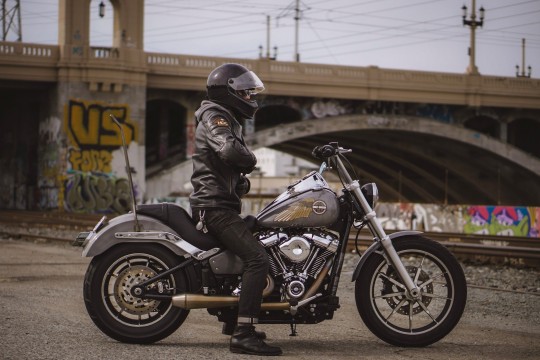
My big girl hit the 10,000-mile mark the other day.
Like the previous time I reached 5-digits on the odometer, it was a moment of immense pride for me. Sure, I like customizing my bike. Sure I like wrenching on my bike. But there’s nothing I like more than riding my bike.
It takes those miles to understand the ins and outs of your bike, to learn how the back end reacts to wet asphalt, to figure out that you should put in an extra quart of oil for the last thousand miles before a service (they’re oddly specific for a reason ;). It takes time in the saddle to know that she gets 40+ mpg on the highway and 30+ mpg in the city (not advertised), that her handlebars start shaking at 4,000 rpm, that her tail light sits crooked after a long ride. It takes those rides to see how she performs at altitude, to know whether she can handle 100+ degree heat, to realize that you can huddle before her warm engine on a cold morning.
Like all milestones or anniversaries, the 10,000-mile mark allows you to take stock of what you have. It allows you to look back on what you’ve accomplished together.
It allows you to look back on the good days…

…and the bad days.

I’ve pampered her…
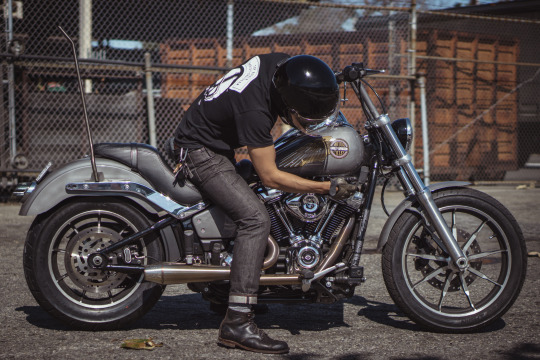
…and I’ve abused her.
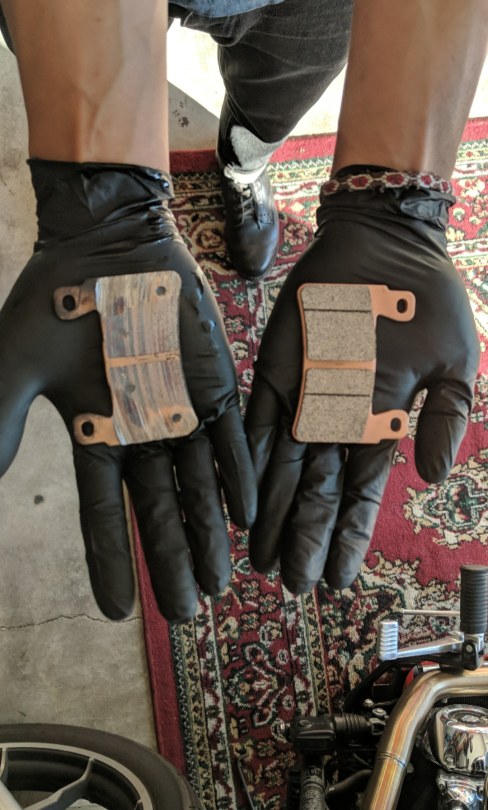
She’s ripped through the twisties…
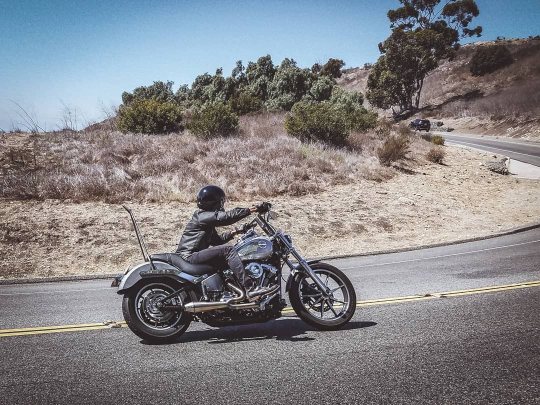
…but she’s slowed me down to enjoy the simple things.

We’ve been to mountain tops…
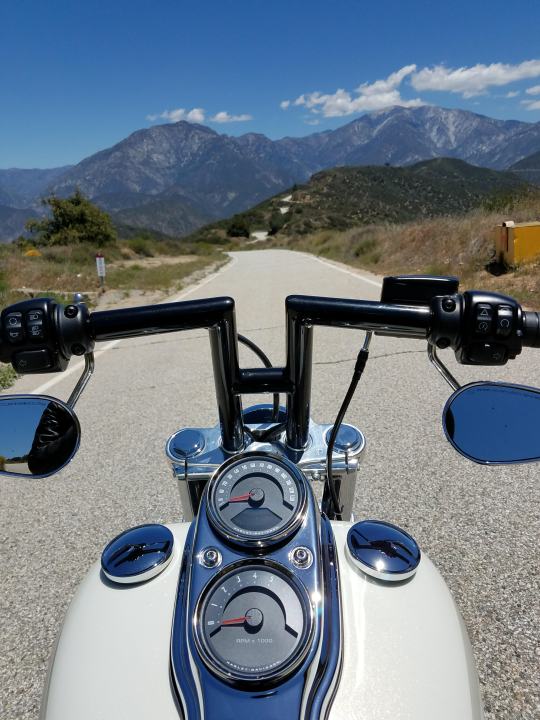
…and valley floors.
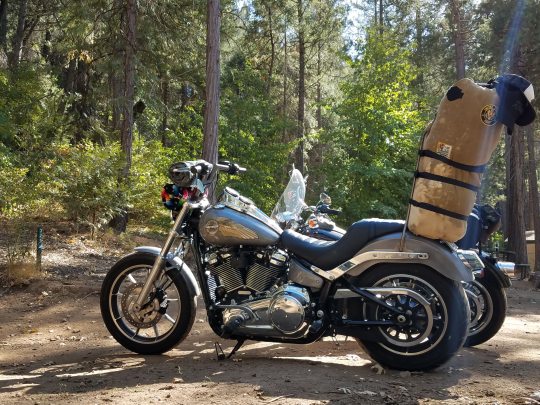
She’s taken me to the coast…
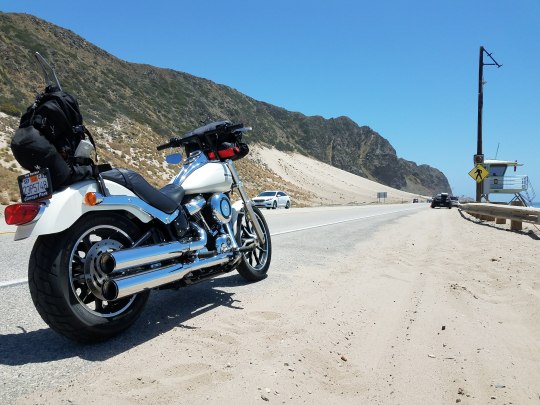
…and to the forest.
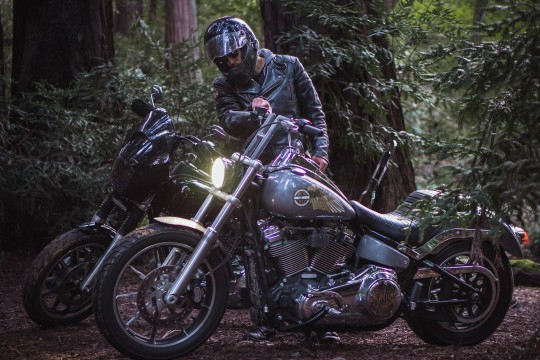
Without her, I never would have made it to Man Camp…
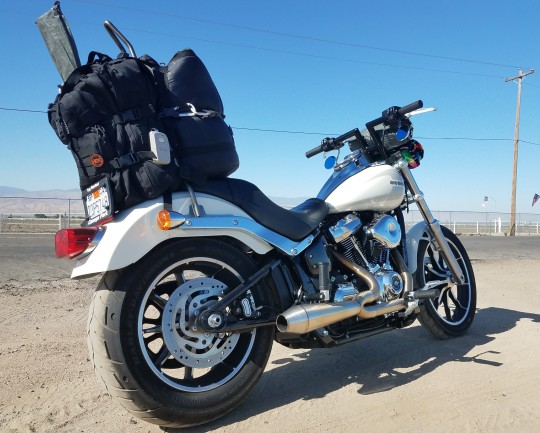
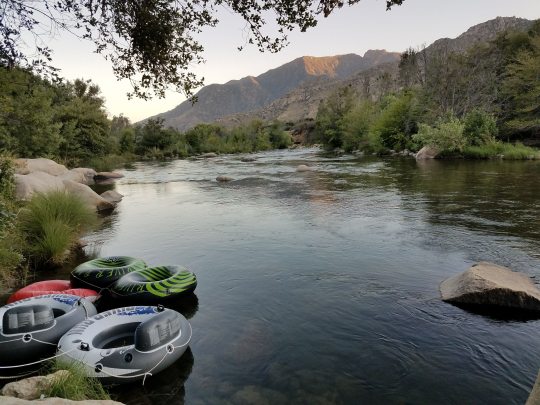
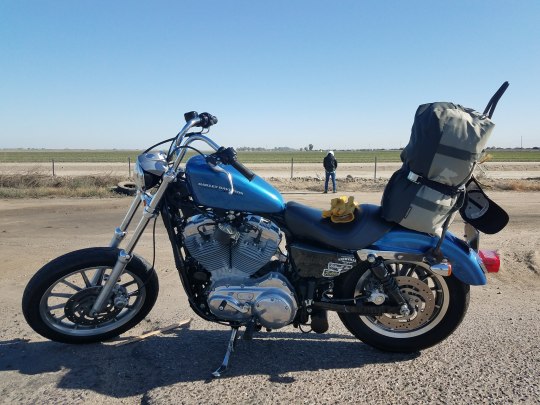
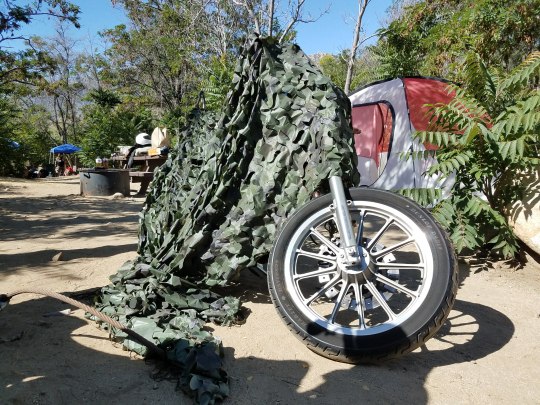
…or Bass Lake…
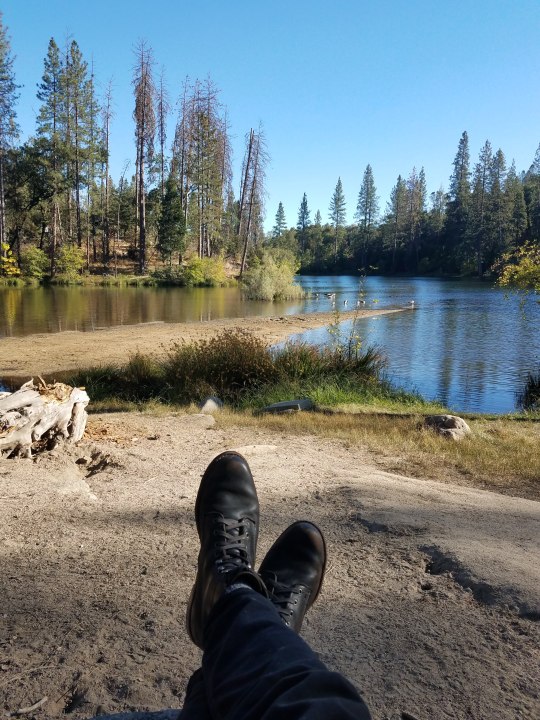


…or Yosemite…

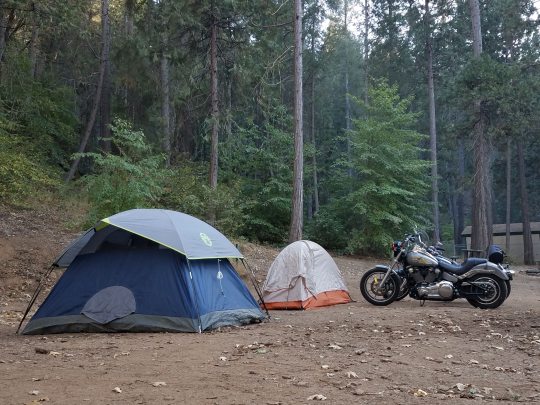

…and you can’t forget about Big Sur.
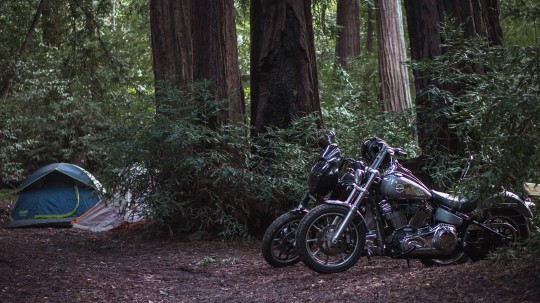
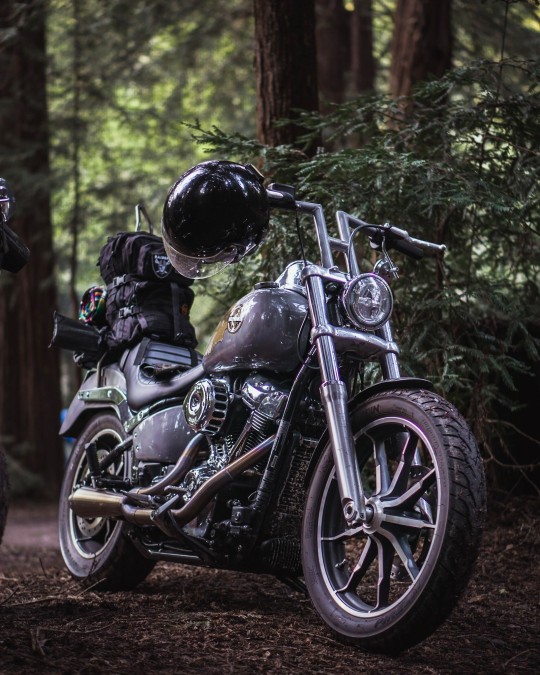
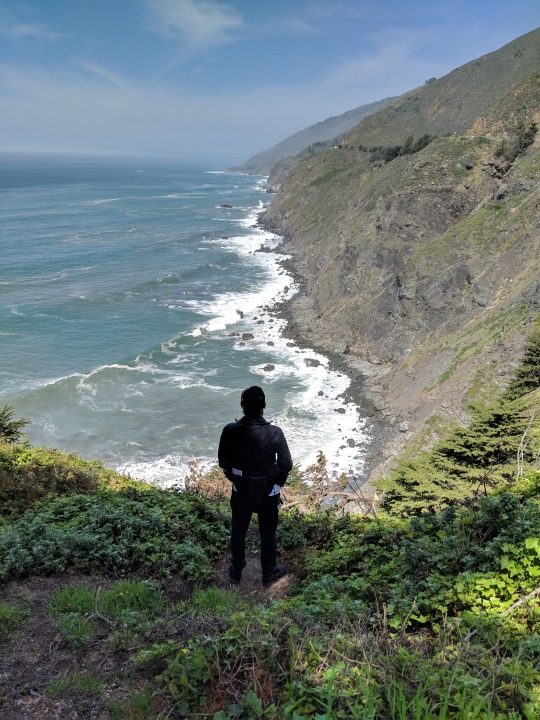
If it weren’t for my Sofia, I wouldn’t have seen the beautiful choppers at Locked N’ Lodi.
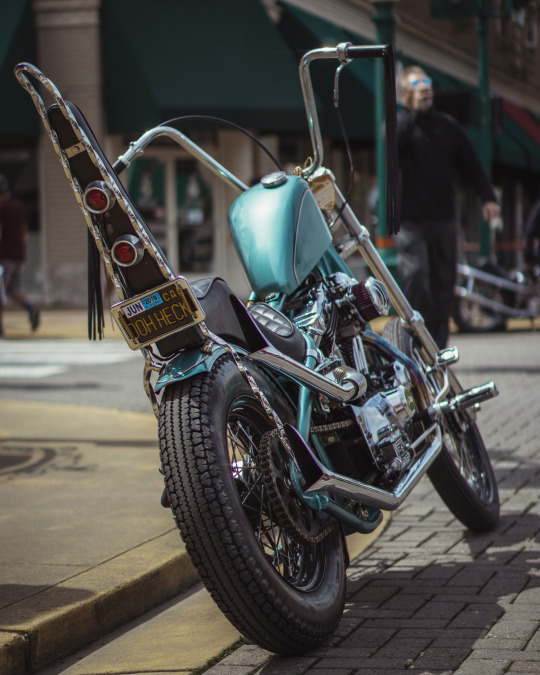
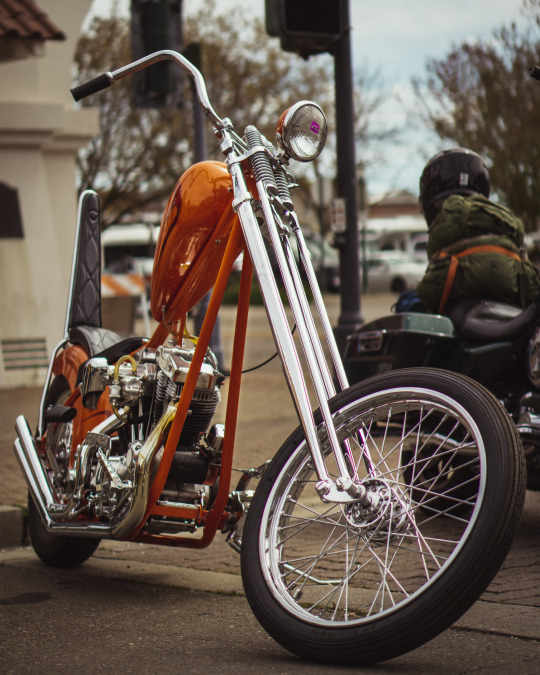
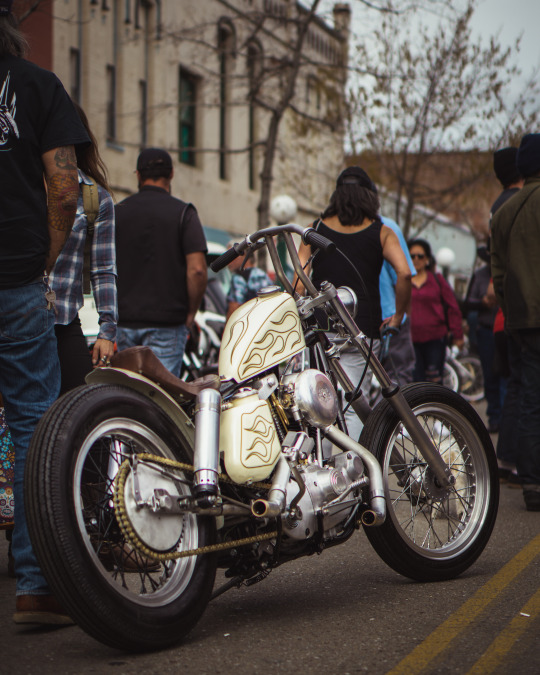
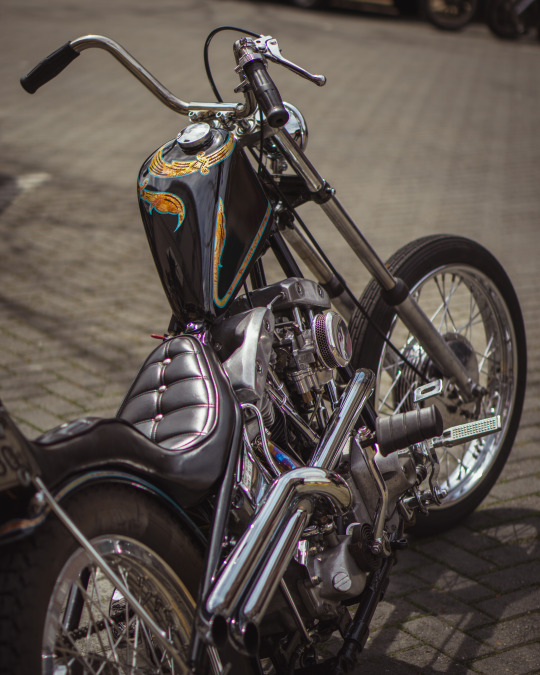
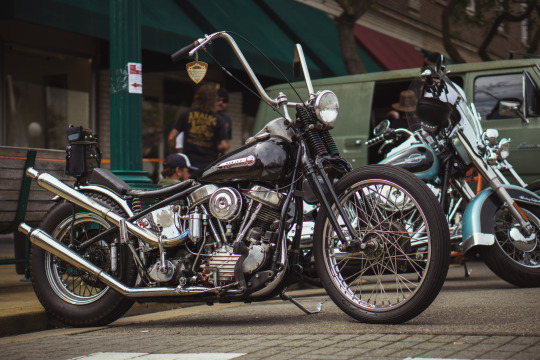
I wouldn’t have attended Dyna Days.
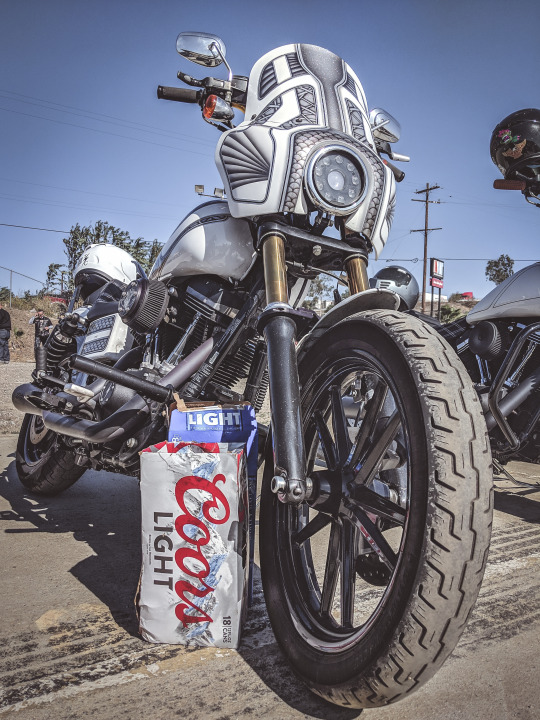


I would have stayed home instead of going to IMS.

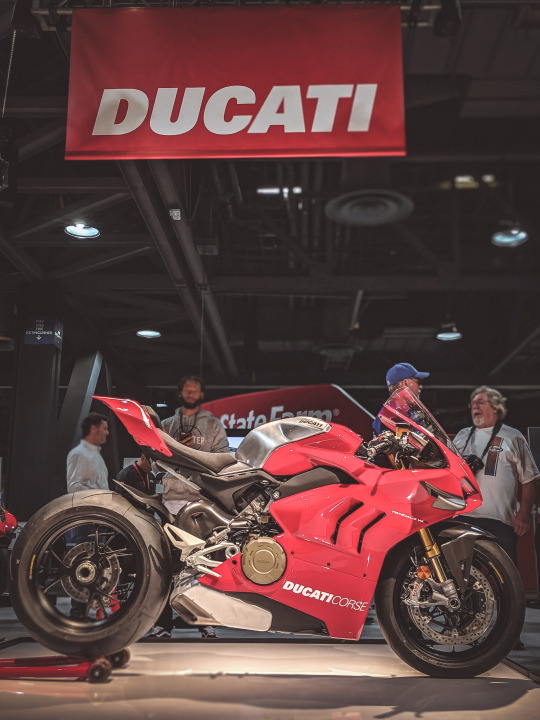
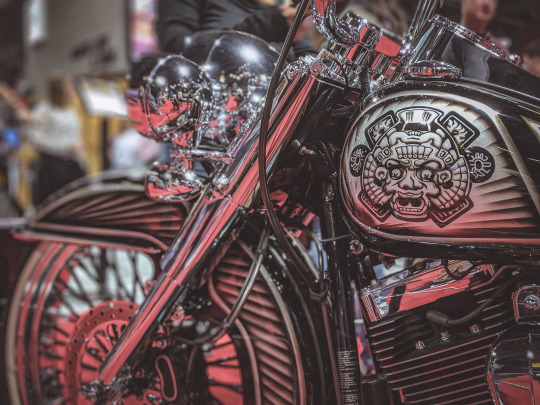
She’s even turned me on to neighborhood gems like The House of Machines…

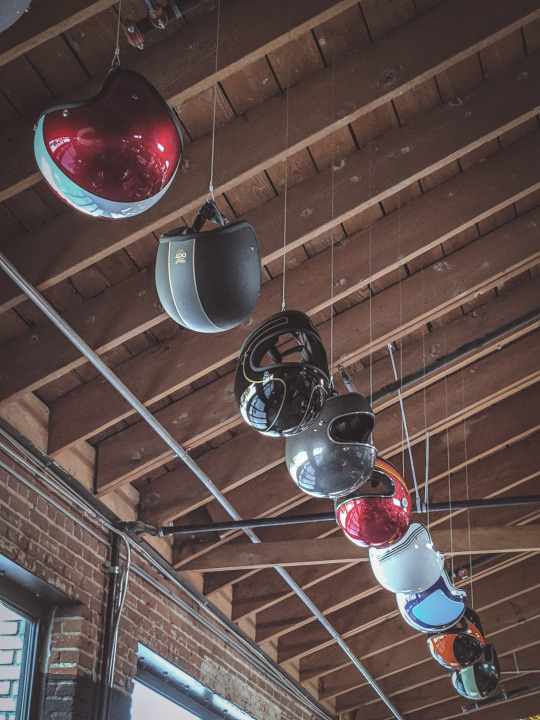
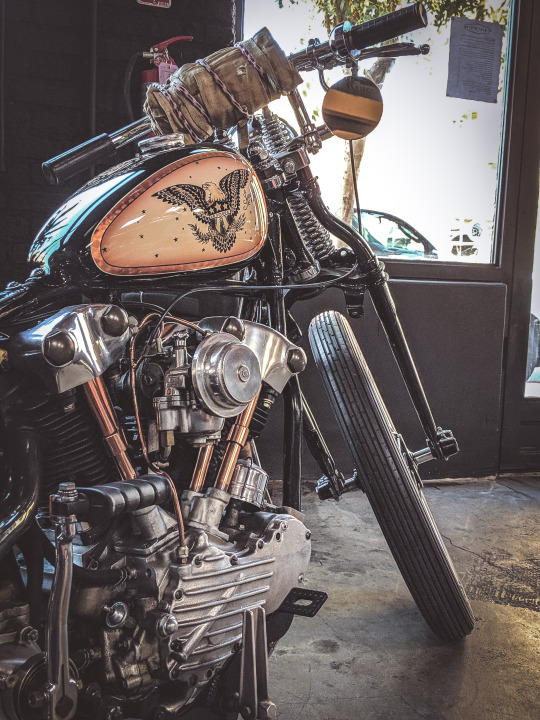

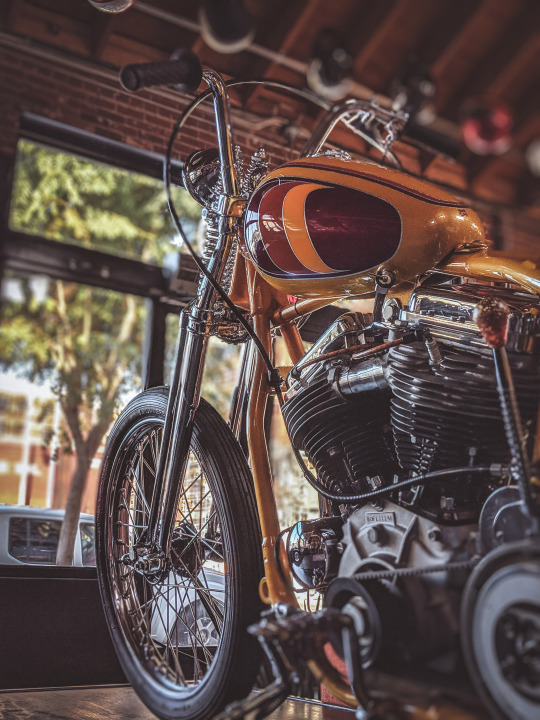
…and Elysian Park.
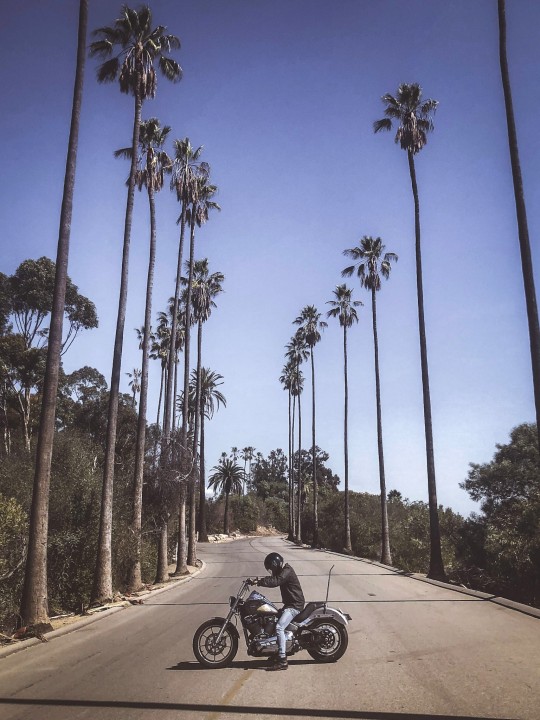
She’s a beauty…
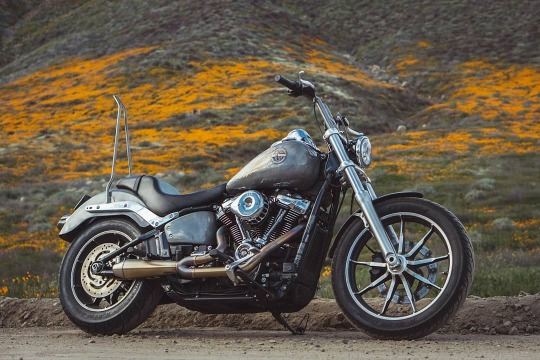
…and a beast!
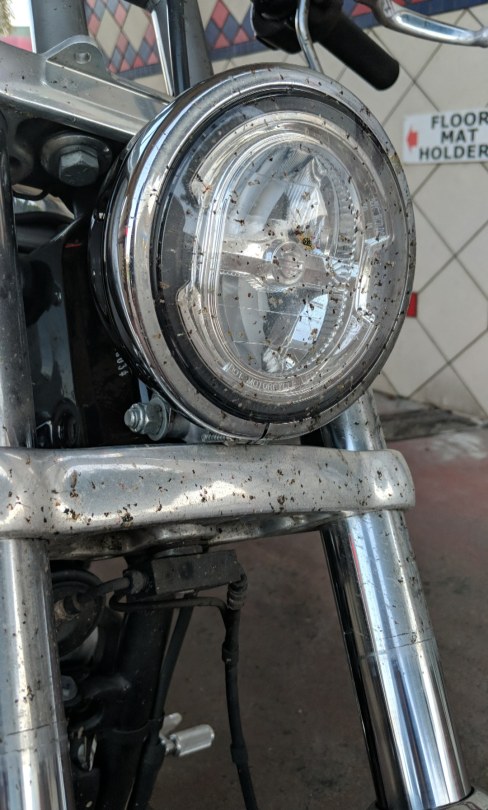


But most importantly, she’s brought me closer to those I love…
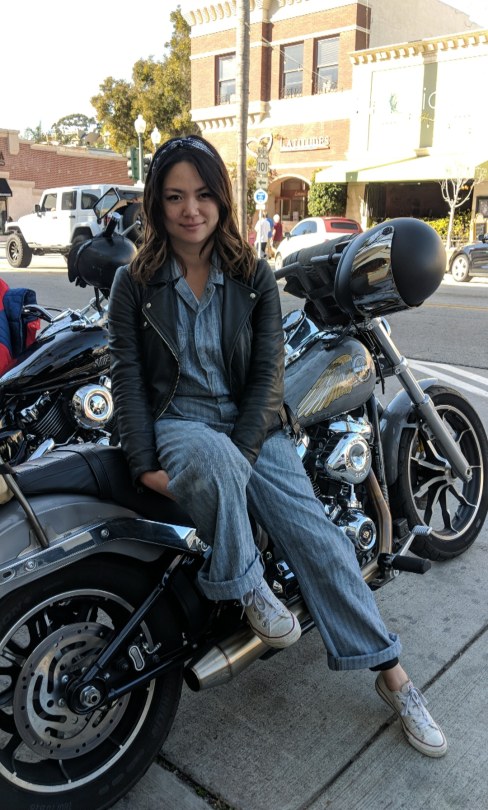
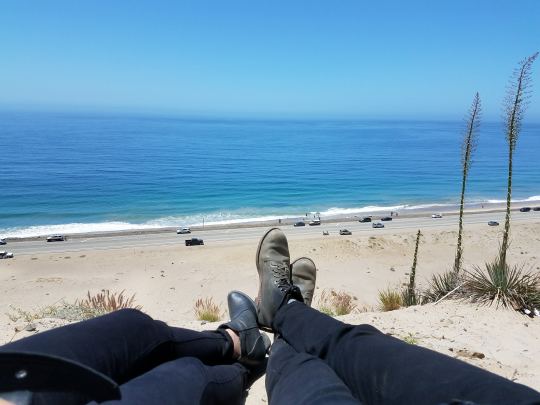

…and introduces me to new friends.
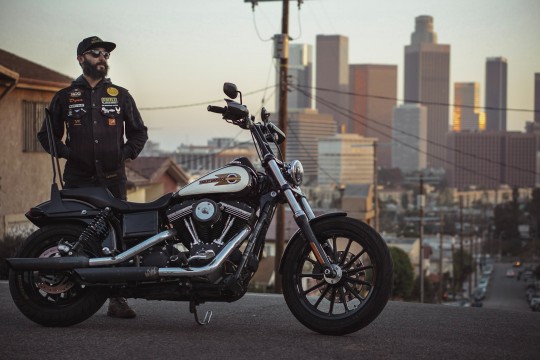


She makes me feel bad-ass.
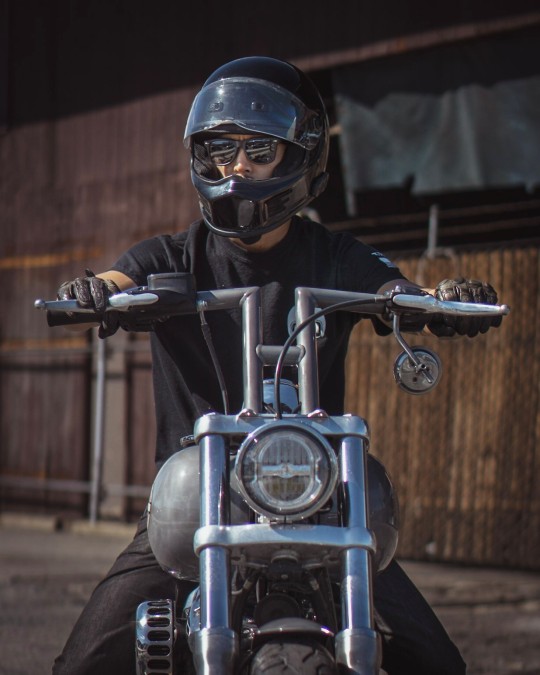
She makes me feel like I’m on top of the world.
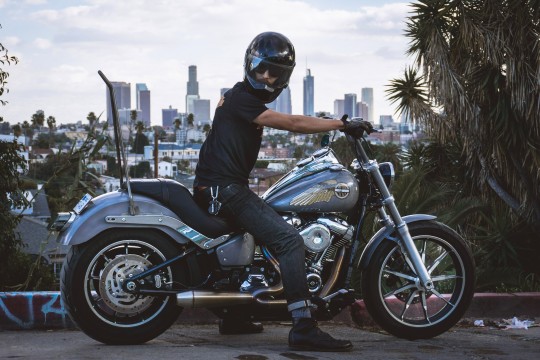
She makes me feel good about myself…
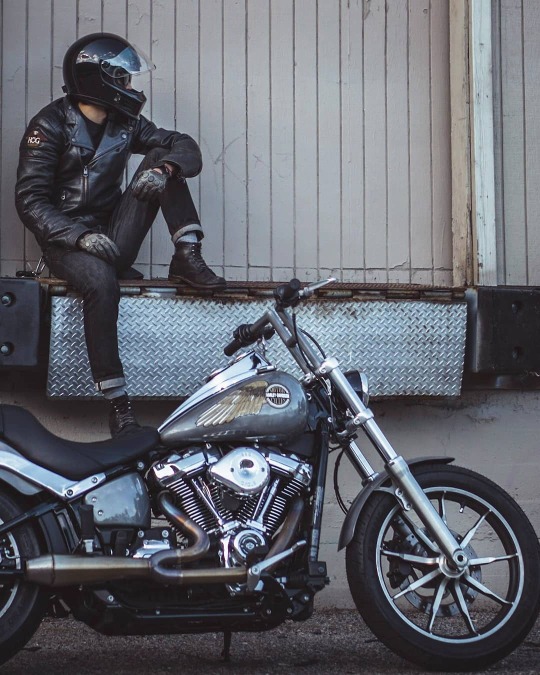
…and isn’t that what motorcycles are all about?
So with that, here’s to the next 10,000 miles, Sofia!
Where you riding this weekend?


Did you say 140 ft-lb of torque? This is gonna be fun…
My left hand extended for the clutch, but it came up empty. My left foot tapped down, but the shifter peg wasn’t there. As I rolled to a stop on Fairfax Blvd, I realized that I didn’t need to downshift. I didn’t need to rev-match. Hell, I didn’t even have to click into neutral once I was settled. What the hell was I on?
From the moment I rolled Zero’s new SR/F off the dealer’s lot, it felt like a foreign experience. Where was the grumble and burble of a combustion motor? Where was my trusty clutch lever? Where was the engine heat?
For me, motorcycles are synonymous with manual transmissions. The clutch modulates the power to the back wheel. The upshifts jolt the bike as you kick into the next gear. But with an electric motorcycle, the drive train is closer to that of a scooter, twist n’ go, and it wasn’t easy to get past that association. That is, until I hit 85 mph with the turn of the wrist!

With the lack of a transmission, the SR/F preserves as much power as possible and sends it directly to the 17″ rear wheel. Eliminating the transmission leaves us with just the engine. Can I actually call it an engine? Ok, powerplant, let’s go with that. The powerplant in the SR/F easily steals the spotlight on this bike. For touting 140 ft-lb of torque and 111 horsepower, it sure delivers all that power in a manageable fashion. I really wish I could see a dyno sheet for the bike (how would that be possible without RPM readings?), because I think it would contain the smoothest power curves known to man.
From takeoff, the torque feels like it’s closer to 70 ft-lb. It isn’t jarring. It rolls on in a controlled manner. It’s as if you were releasing the clutch slowing, though there isn’t one. But as you continue to crank the throttle, the torque ramps up and send you ripping through time and space like a fighter jet (it sorta sounds like a jet too).
Unlike Cruisers, where the torque starts out around 100 ft-lb and diminishes, or Supersports, where it tapers off while the horsepower continues to climb, the SR/F feels like the torque and horsepower escalate inseparably. It provides one of the smoothest, linear powerbands I’ve ever experienced on a motorcycle and is certainly encouraging for anyone looking to “go electric” in the future.
While I only rode on surface streets, and didn’t get a chance to toss her about in the twisties, the suspension held up like a champ. Los Angeles public roads are notorious for uneven pavement, potholes, and debris, but the suspension handled all the irregularities with ease. For me, suspension is best when it goes unnoticed and that’s exactly how I felt with the SR/F’s springs.

With fully-adjustable 43 mm Showa forks up front and a piggyback reservoir monoshock out back, the suspension is confidence inspiring and very accommodating. The ride comfort is high. The road chatter is low. The handling is predictable and snappy. Unlike the FZ-07 I rented in April, the SR/F doesn’t skimp in this category. That quality exhibits not only the capability of the bike but makes the rider want to exhibit their capabilities on the bike.
Speaking of the FZ-07, the riding posture of the SR/F is similarly neutral, if not slightly aggressive, but the attention to detail and aesthetic of Zero’s new naked truly set it apart from anything in this cluttered category and from everything else they’ve produced to this point.

The trellis frame, the futuristic front light, the tasteful mix of angles and curves all contribute the aggressive look and ultimately coalesce in a visually appealing motorcycle. For Zero, the design of the SR/F is a big leap from their past offerings. I’d compare their other models to Tesla’s lineup in the sense that they opt for a minimalistic aesthetic. When it comes to simple designs, there’s a very thin line between looking refined and looking generic. Historically, Zero’s models were on the wrong side of that fence, but the SR/F is changing that for the company. The fit and finish should be considered “premium”, and that level of quality is reflected in all the separate components of the bike, including the brakes.
With radial-mounted clampers on 320 mm dual discs, the SR/F practically stops on command. The J.Juan branded calipers pack a suitable amount of stopping power, considering they’re stopping a 500 lb bike and they aren’t emblazoned with the Brembo badge. The feel was responsive yet smooth, stiff but progressive.
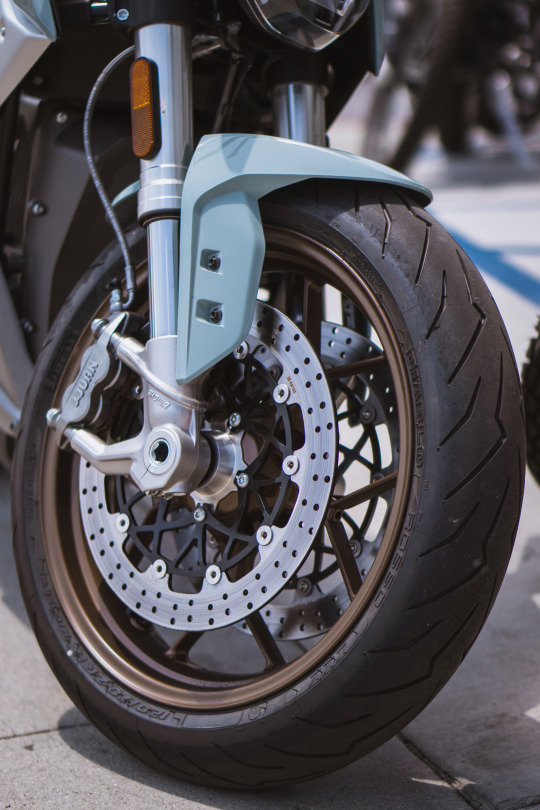
Out back, you have a single 240 mm rotor and a 2-pot caliper. Compared to the robust braking components up front, the rear would seem considerably underpowered, but it does an above average job of slowing down the bike (albeit, my “average” standards are quite low, as I ride a Harley). Coupled with Bosch Advanced MSC (a fancy acronym for traction/stability control), the braking system of the SR/F upheld the premium status of the bike. Sure it doesn’t offer the name recognition of Beringer or Brembo, but they get the job done. And isn’t that what brakes should be about, getting the job done?
Now, I know what you’re probably saying:
Yeah, that’s all great and all, but would you buy one yourself?
And the short answer is no, but let me explain. The SR/F is a revolutionary machine. In my humble opinion, it marks a sea change for the electric motorcycle market and ups the ante for competitors like Lighting, and dare I say, Harley-Davidson.
But the infrastructure hasn’t caught up with the product yet. I can’t confidently say that I would (or could) go on a Pan-American trip with this or any electric motorcycle yet and that’s disheartening because I know that will act as a barrier for potential customers.
As the technology progresses and charge stations are erected, I know the viability of these machines will increase. They won’t just be considered a commuter bike. You won’t have to stay within a certain distance from home when you go for a rip about town or through the twisties. But right now, I don’t have the disposable income to spend $20K+ on a motorcycle that would need to stay regional.
Electric vehicles (cars & bikes) are the future. Whether you’re happy, excited, or ready for that change is beside the point. I fully intend to be an adopter but we’re currently in a stop gap of that transition and I need the baton to be firmly in the grasp of EVs before I make the jump (I’m never selling the Harley though). To me, it’s inevitable, but only time will tell when the takeover takes place.
However, if you have the money to purchase an SR/F, do it, now! If you’re someone fortunate to own multiple bikes, this one would be a purposeful horse in your stable. At my income level, I’m relegated to bikes that are Swiss Army knives but the SR/F could easily be your X-ACTO knife.
Whether you’re opposed to electric motorcycles or a proponent of them, do yourself a favor and give one a try. It’s a motorcycle, guys, you’d be hard pressed not to have fun.
So…would you ride an electric bike?
2019 Zero SR/F - Test Ride
**This clip was captured on a Saturday. No school children were harmed in the making of this video.
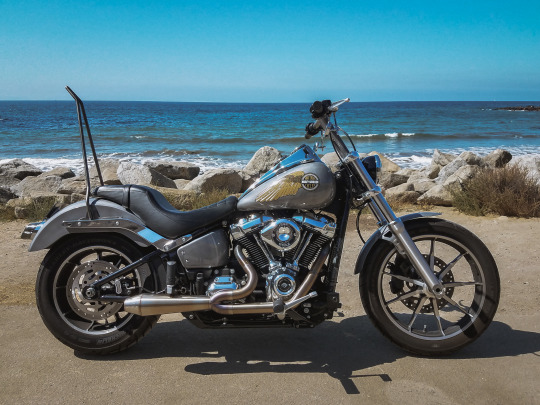
Whenever I read or watch motorcycle reviews, I can’t help but notice a heavy reliance on spec sheets. And I get it, approaching a subjective review of a product with an objective data set certainly helps set the playing field for all competing models. However, this post isn’t about the latest electric naked bike that just hit the market or the revamped scrambler that is being hyped as “game-changing”. This post is about my daily rider.
With that in mind, I could dwell on the dual-bending valve Showa forks, or my high-flow S&S air cleaner, or the 102 ft lbs of torque that the Milwaukee 8 engine produces. But bragging about your bike’s specs is like plastering a “Proud Parent of an Honor Student” on your bumper or boasting about how attractive your significant other is. They’re used to favorably reflect on you, not reflect how that person - or in this case, motorcycle - makes you feel. Sure, your girlfriend could be model material but if she treats you like shit, why does her “hotness” matter, right?
So I’m not going to take that approach in this review. Instead of flooding you with figures on compression rates, length of suspension travel, or lean angle**, I’m going to explain how all of those things contribute to the feeling she gives me.
**Please see the stock spec sheet here (if it interests you)
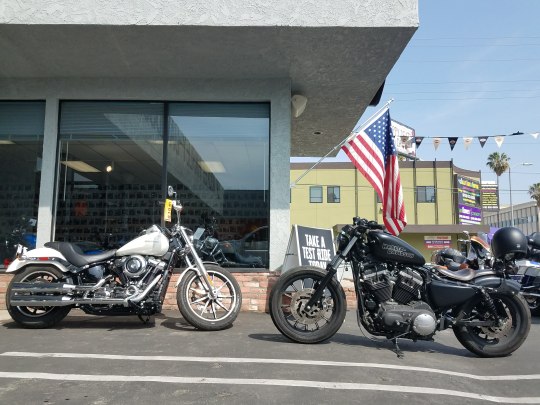
I purchased my Low Rider in April of 2018. I had to trade in my Sportster Iron 883 - which was heartbreaking for me at the time (see the story here) - but it was well worth the sacrifice. From the moment I rolled her off the lot, I knew I made the right decision.
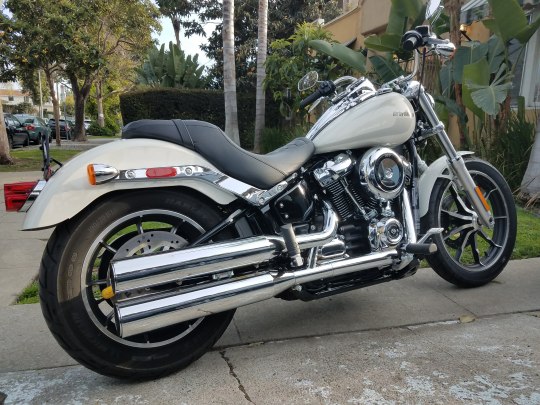
She handled better than the Sporty. She accelerated WAY faster than the 883. And most importantly, she braked lightyears beyond the Iron.
Now, I know what you’re thinking:
I don’t want to know if it’s better than a Sportster, I want to know whether it’s a good purchase.
But I think it’s important for me to establish the bike I originally owned and how that shaped my assessment of the FXLR, and the first place I noticed an improvement was in the suspension.
The combination of Showa forks up front and the monoshock out back puts Harley’s past suspension offerings to shame. For 650 lbs., the bike feels responsive and surprisingly nimble. It wouldn’t be an exaggeration to say that the bike dives into corners and I’ve definitely put that feature to use. But the fork not only allows you to attack the twisties, but it also does a great job of keeping the rubber to the road. The wheel hop of the Sportster: eliminated. If you’re debating whether you should buy a new Softail, I could easily make a case with the upgraded forks alone, but that’s just the front suspension, you still have the brilliant monoshock in the rear.
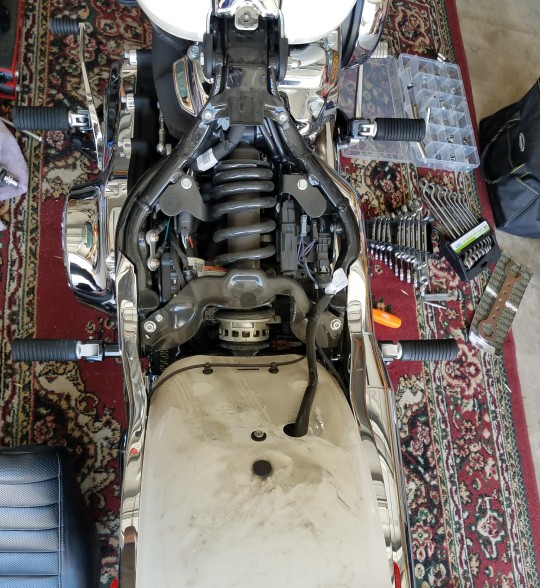
While the fork provides improved handling, the rear suspension grants a new level of comfort. Those potholes no longer send shocks through my spine. Those railroad tracks no longer make my teeth click. Those road irregularities no longer buck my girlfriend off the seat. And if there’s any barometer of rear suspension performance, it’s your old lady’s ass…and mine loves the FXLR. But comfort isn’t the best feature of the monoshock, the stability it provides is. I’ve hit 120 mph twice on the Low Rider thus far, and the stability of the bike never faltered. The speed wobbles of the Dyna: eliminated. Are you noticing a theme here yet?
But don’t get me wrong, the suspension isn’t perfect. There’s no adjustability in the front and the rear doesn’t give you dampening or rebound settings. Also, you have to remove the seat to adjust the monoshock. Unless you’re planning on carrying a flathead screwdriver on you, I wouldn’t set my heart on changing the preload on the fly.
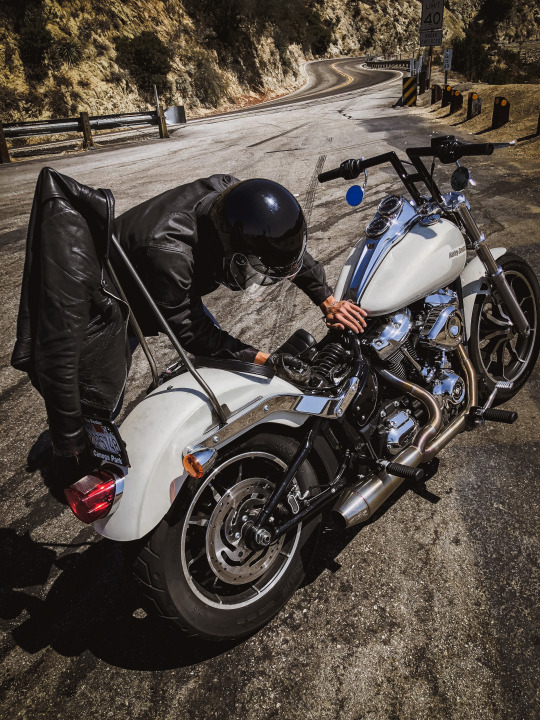
Now, I should note that I plan on upgrading to Ohlin’s suspension (front & rear) in the future, but the stock setup would be sufficient for 90% of those looking for a Harley.
Ultimately, the OEM suspension makes me feel grateful. Grateful for the safety it provides. Grateful for the responsiveness it adds to such a massive bike. Grateful that I get comfort and performance right out of the box!
Which leads me directly to the heart of the Low Rider, the Milwaukee 8 motor.

It shakes less. It runs cooler. It pulls harder (through all 6 gears). Compared to the Twin Cams I’ve ridden, the M8 outshines them in every way. To be honest, you’ll probably need to regulate your own speed if you buy a new Softail because they’re most comfortable at 85-90 mph. Every time I ride on the highway, I hit 100 mph at least once (unintended and intended). There have been many times where I unconsciously hit 70 mph on surface streets!
On the flipside, the M8 is very particular when it comes to modifications. My tuner/mechanic has told me that finding the right configuration of parts is crucial to any performance upgrades you install on the new mill. Luckily, I had some guidance, but if you’re considering customizing your Milwaukee 8, I suggest consulting a professional - or at the very least read some forum boards - before you slap on any old exhaust or fuel manager.
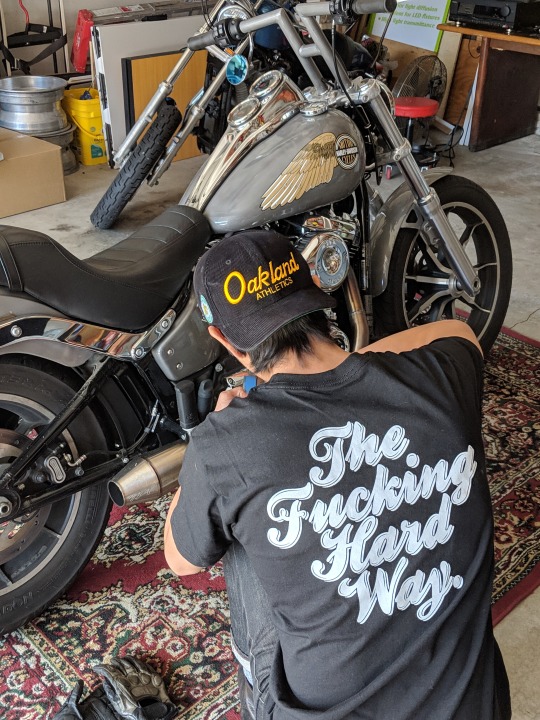
On the note of fuel management, if you want to maintain the maximum range (200+ miles per tank), leave the engine in stock form. After my numerous mods, I’m lucky if I can squeak out 150 miles between fill-ups. I’d be lying if I said I regret sacrificing those additional 50 miles per tank - because Sofia absolutely rips - but it’s something you should weigh before buying or upgrading an M8.
If I had to express how the engine makes me feel, I’d say it makes me feel spoiled. Spoiled by all that torque. Spoiled that she pulls through all 6 gears. Spoiled that I get the power of a Harley without all the shaking or heat.
Now, we’ve been dwelling on speed up to this point, but if you’re planning on going fast, you have to be able to stop as well…
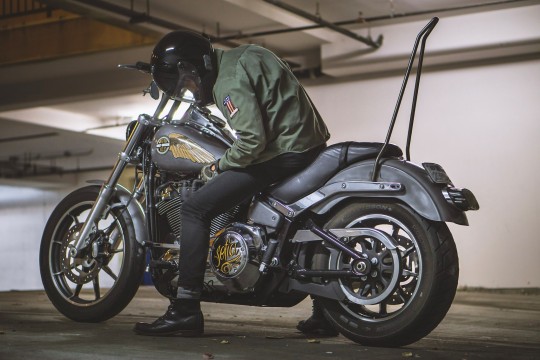
When it comes to the brakes, I have to caveat that I ride my Low Rider harder than most Harleys are intended. I currently need new rotors, pads, lines (braided), and a master cylinder rebuild because I’ve run the brakes into the ground.
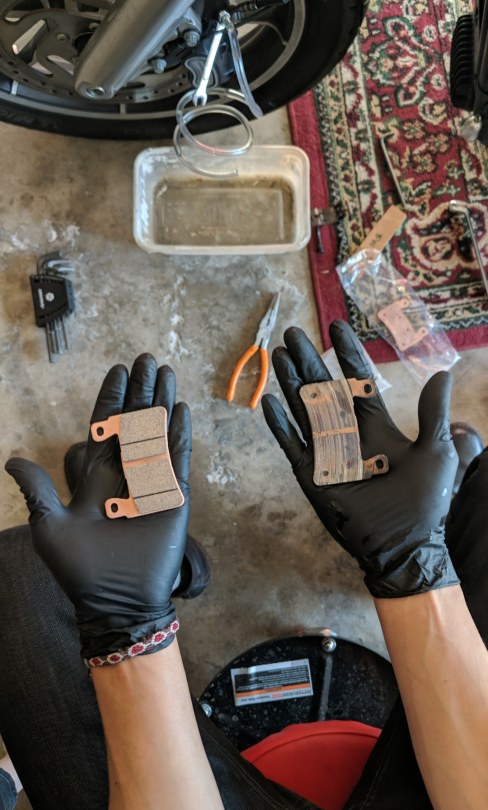
Though the front end is only outfitted with a single disc, the bite of the 4-piston calipers really help to slow down the 650 lbs. of the Low Rider. While the front brake lever loses feel over time - due to the rubber brake lines - it easily retains the forceful braking of those 4-pot calipers. However, the same can’t be said of the rear caliper, which lacks any responsiveness and is downright mushy.
Most riders say that the front brakes provide 70% of your stopping power while the rear covers the remaining 30%. On the FXLR, that ratio is more like 90/10. But in the end, you’re riding a Harley, and Harleys have never been known for their braking components. Now, that’s by no means an excuse, but if you’ve ridden a Harley before, your expectations are already set appropriately. If not, good luck!
With the vague feel of the rear pedal and the diminished responsiveness of the front lever over time, I’d say that the brakes make the bike feel sketchy. But hey, you’re riding a chopper, baby! Sketchiness is part of the package.
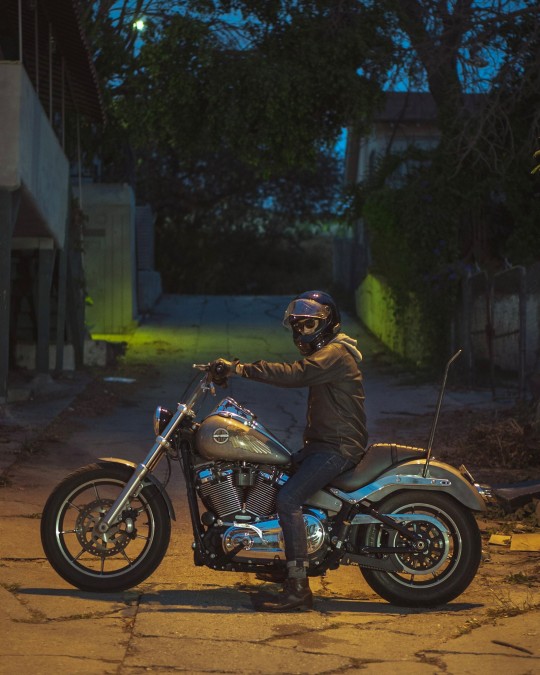
In the end, if I had to do it all over again, I would buy the Low Rider every time. The bike outperforms every Harley I’ve ever ridden and it’s one of the most aesthetically versatile platforms under HD. You can go Club Style, Bobber, Chopper. Hell, I’ve even seen Scrambler and Cafe Racer M8 Softails. It’s for that reason, that I didn’t cover the design of the Low Rider. I think my bike is the perfect example of the FXLR being a blank canvas for you to customize yourself.
Now the only question left is: when are you upgrading?
TFW you get off work early for a three-day weekend
…Fuck the Rest

The Californian Motorcycle Show, Santa Anita Park, Arcadia, CA | 05.04.2019




Here comes the night










